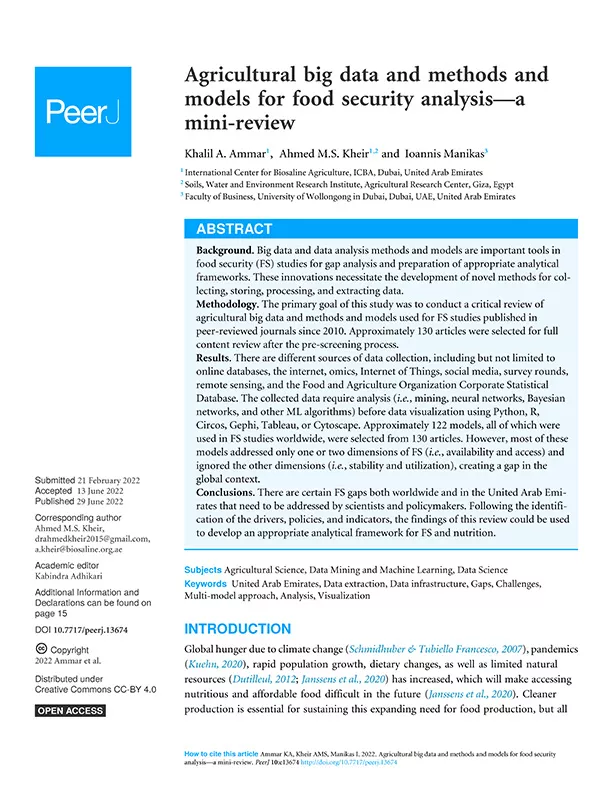Agricultural big data and methods and models for food security analysis—a mini-review
Background
Big data and data analysis methods and models are important tools in food security (FS) studies for gap analysis and preparation of appropriate analytical frameworks. These innovations necessitate the development of novel methods for collecting, storing, processing, and extracting data.
Methodology
The primary goal of this study was to conduct a critical review of agricultural big data and methods and models used for FS studies published in peer-reviewed journals since 2010. Approximately 130 articles were selected for full content review after the pre-screening process.
Results
There are different sources of data collection, including but not limited to online databases, the internet, omics, Internet of Things, social media, survey rounds, remote sensing, and the Food and Agriculture Organization Corporate Statistical Database. The collected data require analysis (i.e., mining, neural networks, Bayesian networks, and other ML algorithms) before data visualization using Python, R, Circos, Gephi, Tableau, or Cytoscape. Approximately 122 models, all of which were used in FS studies worldwide, were selected from 130 articles. However, most of these models addressed only one or two dimensions of FS (i.e., availability and access) and ignored the other dimensions (i.e., stability and utilization), creating a gap in the global context.
Conclusions
There are certain FS gaps both worldwide and in the United Arab Emirates that need to be addressed by scientists and policymakers. Following the identification of the drivers, policies, and indicators, the findings of this review could be used to develop an appropriate analytical framework for FS and nutrition.
Year
2022
Publication Source
Plant Biology
Publication type
Scientific Paper











